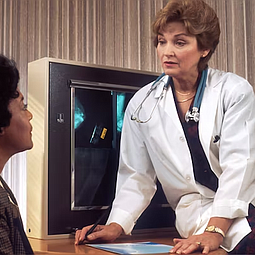Everything is Going Swimmingly
January 1, 2024 at 3:14 p.m.
In the dark winter months, swimming can be enjoyable and an outstanding full-body workout for older adults. Further, it can be an effective way of building and maintaining muscle strength. The water provides a natural resistance that makes your muscles work harder. The resistance offered by the water may even be up to 44 times greater than that of air, suggesting that swimming may be a more challenging workout than other forms of exercise.
.
Grant Fairbanks, who is 74 and lives in Bethel, Alaska, attributes a general overall improvement in health from doing water aerobics twice a week. He said he feels 10 years younger than his chronological age. “When I go to Homer (Alaska) and swim with older people, it seems like the best possible exercise. When I don’t get to do water aerobics, I have more aches and pains.”
Fairbanks said many more opportunities are now available for swimming in 2024 because the threat from COVID-19 has dissipated. “I don’t think people think about it anymore. It’s more like a cold,” said Fairbanks. “Being in the pool is nice and it is not weight bearing, but it really gets the muscles moving. You can strengthen up a lot of muscles with the right instructor.”
Studies have demonstrated that regular swimming can help lower blood pressure, reduce the risk of heart disease and improve cholesterol levels. Additionally, studies suggest that swimming may significantly reduce the risk of death from heart disease. Particularly advantageous for seniors who suffer from arthritis or other joint issues, swimming can help reduce stiffness in the joints.
Older adults who participate weekly in many different types of leisure time activity, such as walking for exercise, jogging, swimming laps, or playing tennis, may have a lower risk of death from any cause, as well as death from cardiovascular disease and cancer, according to a study led by researchers at the National Cancer Institute, part of the National Institutes of Health.
The findings suggest that it’s important for older adults to engage in leisure time activities that they enjoy and can sustain, because many types of these activities may lower the risk of death, the authors wrote. The findings, which were published in JAMA, used data from 272,550 adults between ages 59 and 82 who had completed questionnaires about their leisure time activities. The researchers looked at whether participating in equivalent amounts of seven different exercise and recreational activities, including running, cycling, swimming, other aerobic exercise, racquet sports, golf, and walking for exercise, was associated with lowered risk of death.
They found that achieving the recommended amount of physical activity per week through any combination of these activities was associated with a 13% lower risk of death from any cause compared with no participation. Currently, it is recommended that all older adults engage in 2.5 to 5 hours of moderate-intensity aerobic physical activity, or 1.25 to 2.5 hours of vigorous-intensity aerobic physical activity each week.
Grab Your Suit and Change Your Outlook
Scores of studies have demonstrated that there are significant mental health benefits from swimming. The weightlessness of the water can relax the body and provide a calming effect on the mind. One study conducted by a swim club in England demonstrated that swimming may significantly reduce anxiety and depression in adults. Swimming promotes the release of endorphins, which can help improve mood. A study was conducted in India with 50 older adults who regularly swim and 50 non-swimmers. The researchers found that the swimmers had better mental speed and attention compared to non-swimmers.
Another significant benefit for older adults is that swimming can improve overall brain function and may help improve sleep quality, which is essential for maintaining optimal brain function. Studies suggest that moderate to vigorous swimming increases energy levels and alertness during the day and improves sleep quality by reducing the time it takes to fall asleep.
“Swimming is crucial to many older adults’ lives, it provides a gentle exercise that not only conditions their cardiovascular system, but it helps them strengthen their stability muscles. Swimming helps a person become stronger from the inside out, by improving stability and balance. This is exceptionally important when walking on snowy and icy covered walkways and parking lots,” said Michele Cateson, who is the Assistant Director of Recreational Programs at Alaska Pacific University in Anchorage,
Swimming is an effective way to burn calories, making it an excellent option for older adults trying to maintain a healthy weight. The number of calories burned during a swim session will depend on factors such as your weight, the intensity of your workout and the type of stroke you’re performing. The calorie-burning potential can be increased by performing different strokes and intensities in a swim routine.
“Most of our aquatic programs provide a tight-knit community aspect, several of the adults get together for brunches or dinners. Some even stay after their program and talk in our lobbies.
Several 60+ year old U. S. Masters swimmers call themselves, ‘The Slow Lane Supper Club.” They meet weekly at an agreed upon restaurant to gain a sense of community and belonging,” said Cateson.
Getting Started and Finding the Right Fit
It is recommended that all older adults consult their physician before beginning a new exercise routine. This can help provide guidance on the appropriate level of activity based on an individual’s pre-existing health conditions.
With swimming, picking out the right swimwear and gear makes a big difference. Swimsuits that work best are made of high-quality chlorine-resistant materials with adequate support and coverage. Experts recommend starting with gentle water exercises and then gradually progressing to swimming laps. Private swimming less are available at most swimming pools. It is recommended that you establish a regular swim schedule and set achievable goals.
 John Schieszer is an award-winning national journalist and radio and podcast broadcaster of The Medical Minute. He can be reached at medicalminutes@gmail.com.
John Schieszer is an award-winning national journalist and radio and podcast broadcaster of The Medical Minute. He can be reached at medicalminutes@gmail.com.





